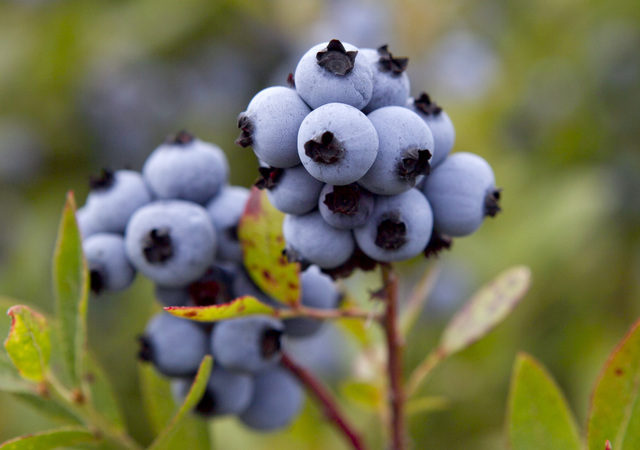Is there a nutritional difference between wild blueberries and farm-raised ones? ADVERTISING Is there a nutritional difference between wild blueberries and farm-raised ones? The plump farm-raised blueberries known as “high bush” blueberries and their diminutive cousins, the tiny wild blueberries
Is there a nutritional difference between wild blueberries and farm-raised ones?
The plump farm-raised blueberries known as “high bush” blueberries and their diminutive cousins, the tiny wild blueberries that grow in the barrens of Maine and Eastern Canada and other areas, are all loaded with nutrients.
“We as scientists don’t see a big difference from a health perspective,” said the researcher Amy Howell of Rutgers University’s Marucci Center for Blueberry and Cranberry Research and Extension. “They’re both excellent.”
Blueberries are low in calories and high in fiber and vitamins C and K. They also contain potent antioxidants, including anthocyanins, the plant pigments that give them their deep purplish-blue color, and other compounds that help protect cells from free radical damage and have anti-inflammatory properties.
“The blueberry by itself is a cut above almost any other fruit because it has such a complex biochemical profile, and so many interacting phytochemicals that hit human therapeutic targets,” said Mary Ann Lila, the director of the Plants for Human Health Institute at North Carolina State University in Kannapolis, North Carolina.
The Wild Blueberry Association of North America says the wild variety is even more nutritious than the farm-raised kind, pointing to a 2010 analysis from the U.S. Department of Agriculture that looked at the antioxidant values in dozens of fruits, vegetables, spices and other foods. That report found blueberries had some of the highest antioxidant values, and that gram for gram, raw wild blueberries contained double the antioxidants of raw farm-raised blueberries. The findings were echoed in a Cornell University study that reported wild blueberries had higher cellular antioxidant activity than farm-raised blueberries,
But the USDA has since removed the antioxidant database from its website, citing “mounting evidence that the values indicating antioxidant capacity have no relevance to” human health. The agency also expressed concern that food and supplement manufacturers were misusing the information to promote their products.
Still, Lila said wild blueberries contained a greater number and variety of phytochemicals than cultivated blueberries, including up to 26 anthocyanin compounds that help them survive in the rugged environment.
“They’re not pampered like the cultivated blueberries,” which are bred for sweetness, size and ability to withstand shipping, Lila said. “They produce these berries under extreme stress, building up the phytochemicals that help them withstand the harsh wild conditions.”
A few small studies suggest that blueberries, whether wild or farmed, may have health benefits, though any effects are likely to be minor. A study of nine older adults who added wild blueberry juice to their diets for 12 weeks found improvements in memory. Another found that obese men and women who consumed smoothies containing freeze-dried powder made from farm-raised blueberries had improvements in insulin sensitivity.
If you like to eat fresh raw blueberries, you’ll probably have to stick with farm-raised: Wild blueberries are highly perishable, and almost the entire crop is frozen.
© 2016 The New York Times Company



